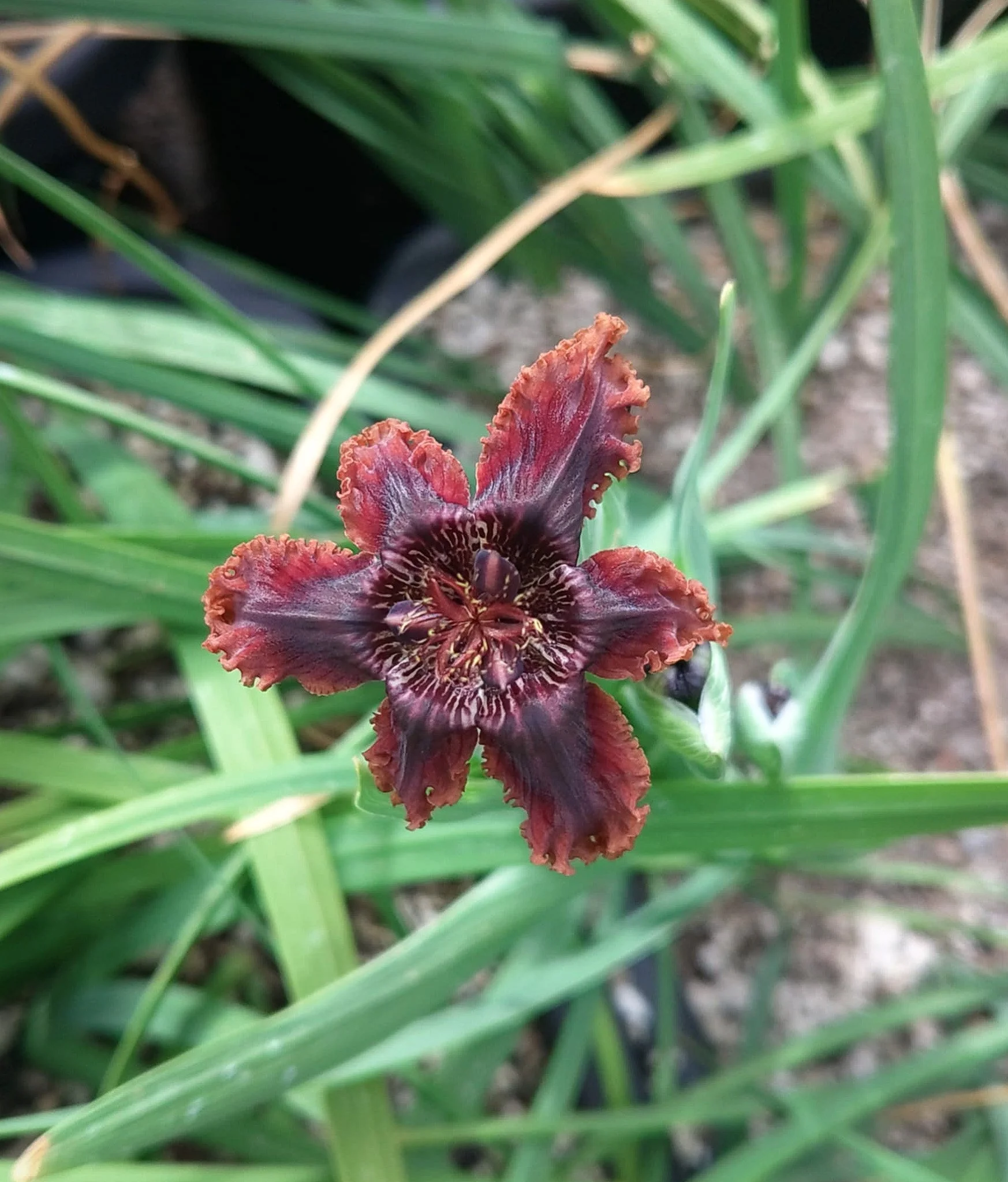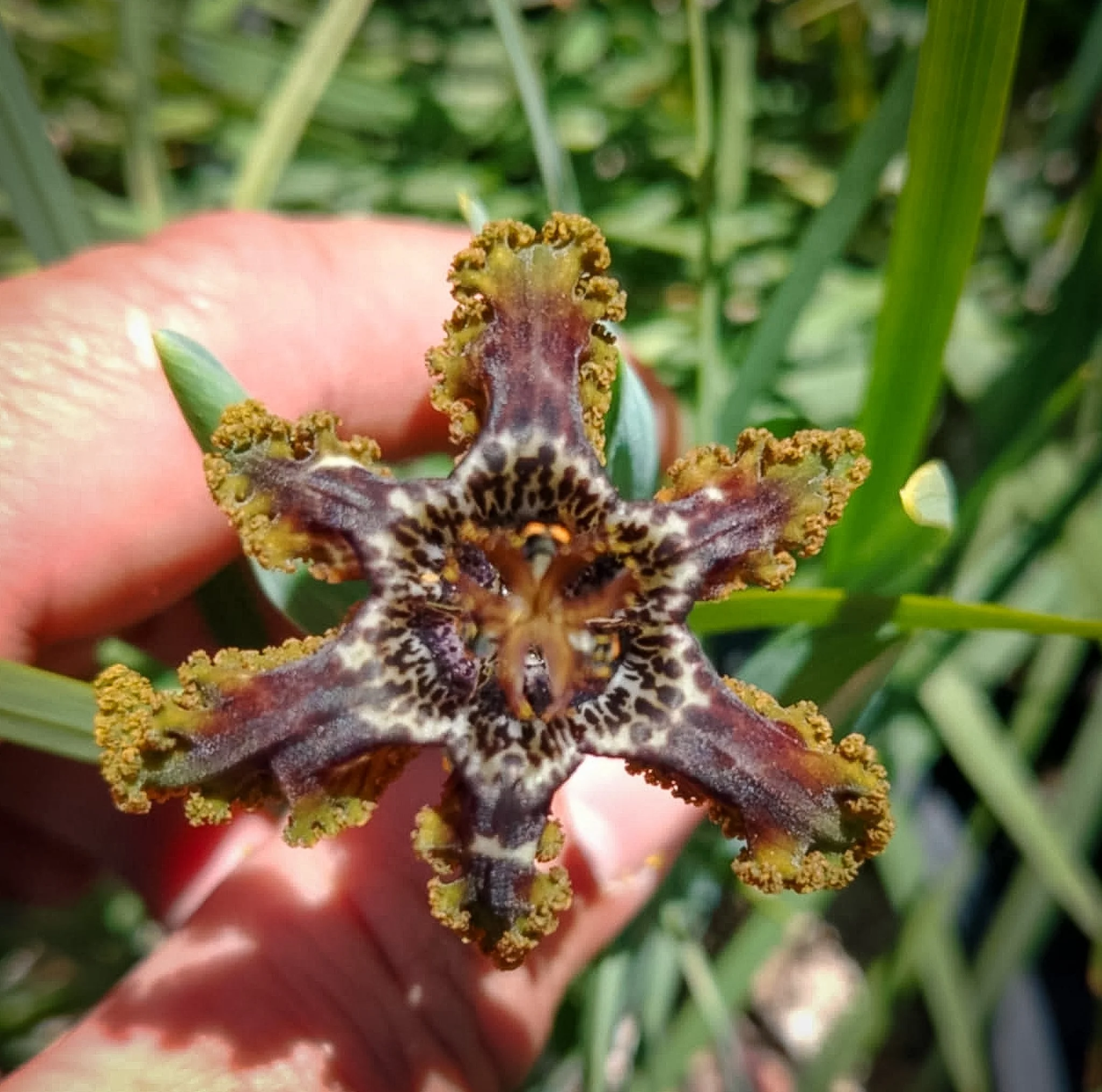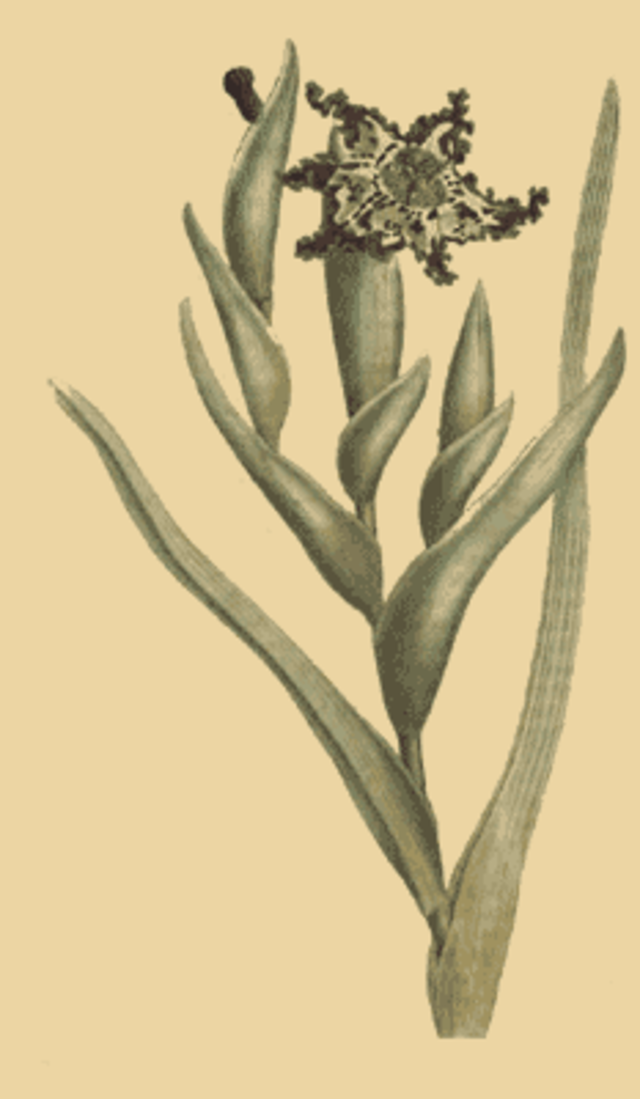
Ferraria crispa B
An extraordinary member of the iris family, Ferraria crispa ‘B’ strain dazzles with its bizarrely beautiful, frilly-edged flowers that seem almost otherworldly. Native to the winter-rainfall regions of South Africa’s Western Cape, this selection produces intricately ruffled blooms in mottled shades of chocolate, olive-green, and deep maroon, often with blue or purple overtones depending on the strain.
Best suited for pot culture under cover or in very well-drained, sheltered spots in Mediterranean-style rock gardens, Ferraria crispa emerges in late winter to early spring with slender, sword-like leaves followed by its fascinating blooms. Each flower lasts only a day or two, but the plant produces many buds in succession, offering a prolonged display.
Requires full sun and excellent drainage, especially during its summer dormancy, when the bulbs must remain dry. Hardy only to around USDA Zone 9 (approx. -6°C/20°F) — in cooler zones, lift and store dry or grow under cold glass. A spectacular oddity for collectors and those who enjoy the curious and rare in their spring garden palette.
An extraordinary member of the iris family, Ferraria crispa ‘B’ strain dazzles with its bizarrely beautiful, frilly-edged flowers that seem almost otherworldly. Native to the winter-rainfall regions of South Africa’s Western Cape, this selection produces intricately ruffled blooms in mottled shades of chocolate, olive-green, and deep maroon, often with blue or purple overtones depending on the strain.
Best suited for pot culture under cover or in very well-drained, sheltered spots in Mediterranean-style rock gardens, Ferraria crispa emerges in late winter to early spring with slender, sword-like leaves followed by its fascinating blooms. Each flower lasts only a day or two, but the plant produces many buds in succession, offering a prolonged display.
Requires full sun and excellent drainage, especially during its summer dormancy, when the bulbs must remain dry. Hardy only to around USDA Zone 9 (approx. -6°C/20°F) — in cooler zones, lift and store dry or grow under cold glass. A spectacular oddity for collectors and those who enjoy the curious and rare in their spring garden palette.







